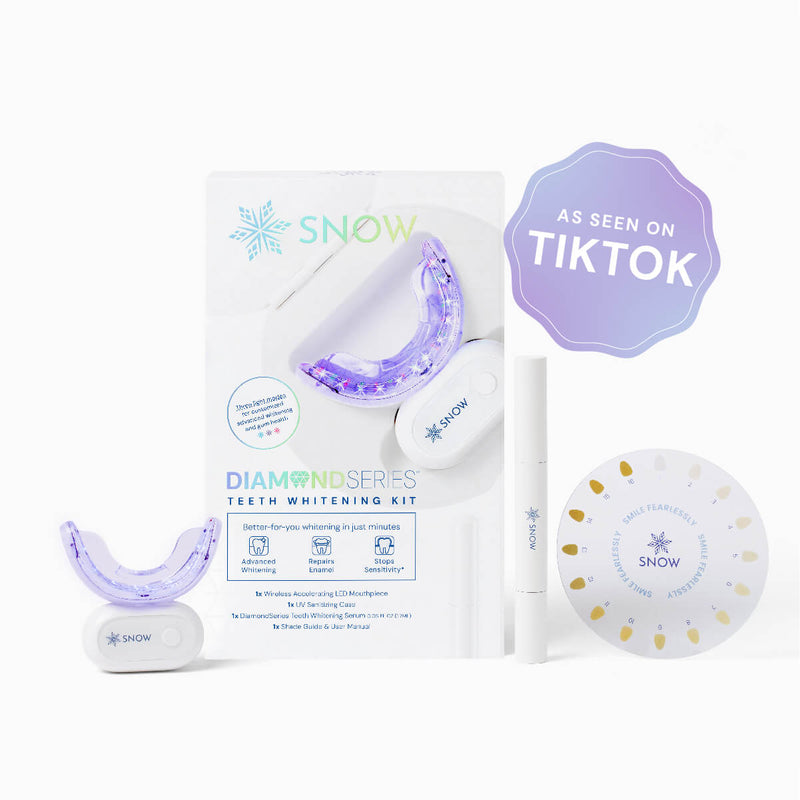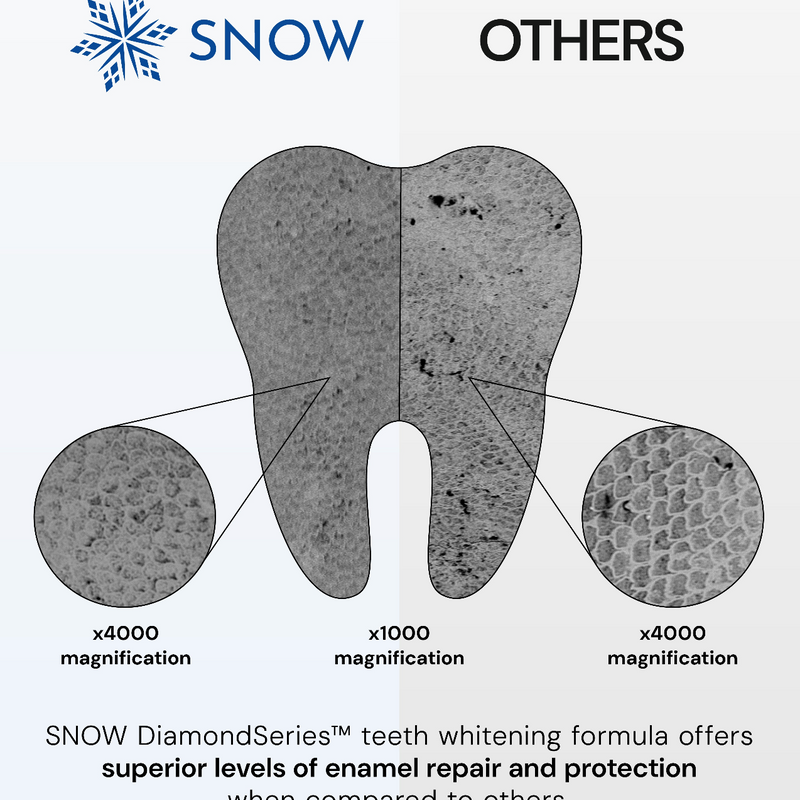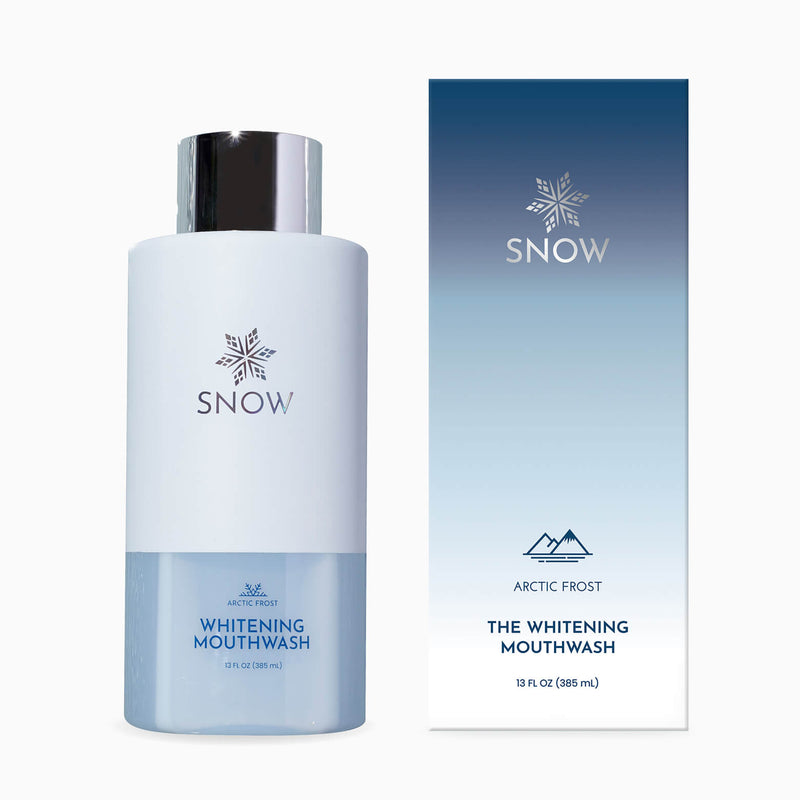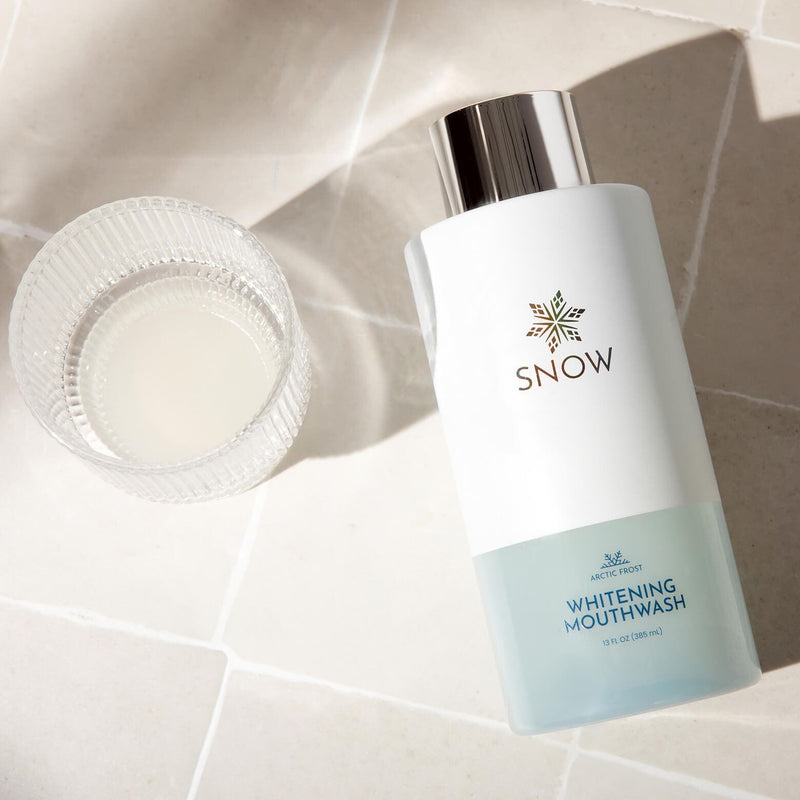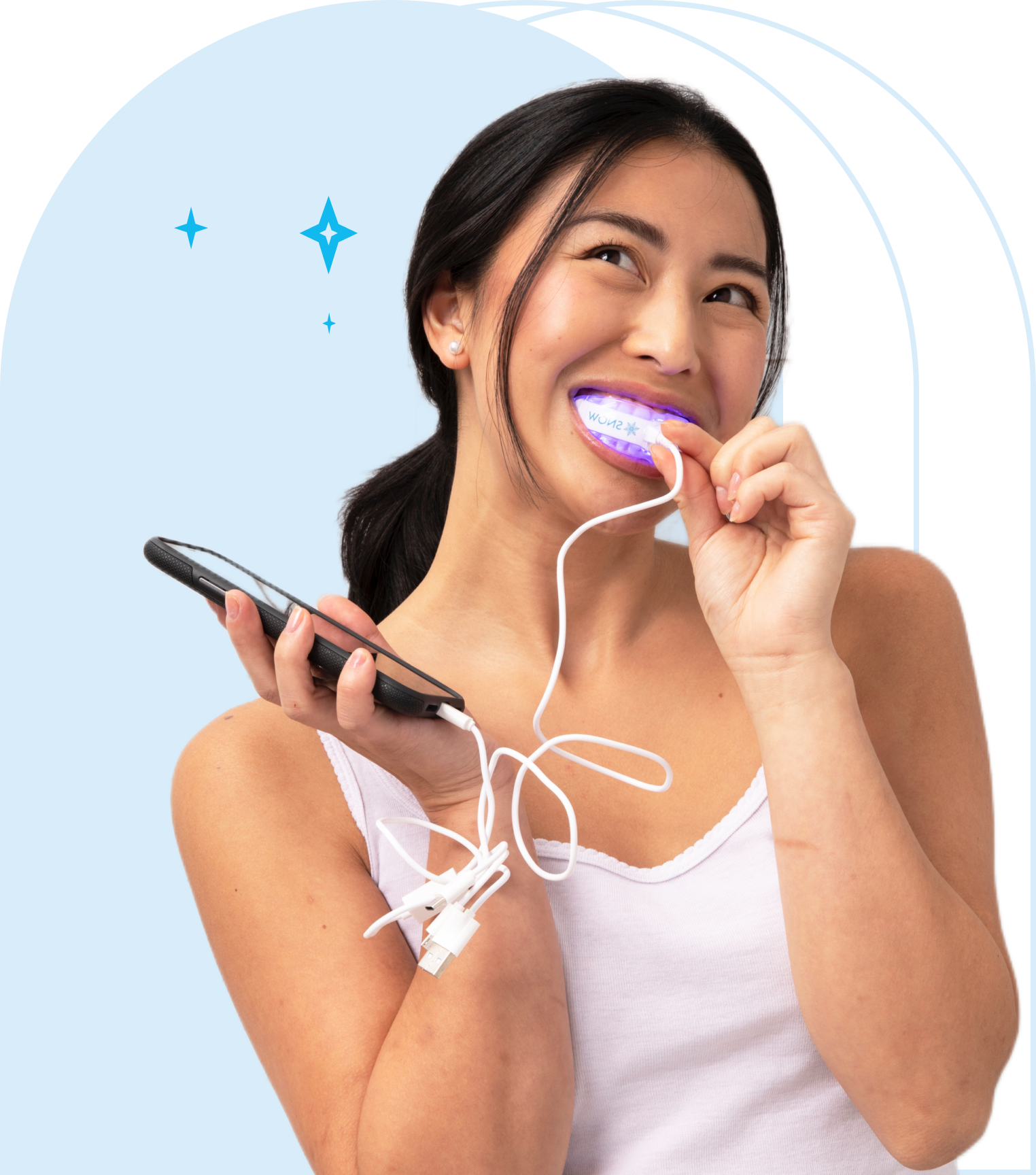When faced with the concern of blood stains on teeth, it's essential to understand both the causes and solutions. This common dental issue can be alarming, but with the right knowledge and tools, it's manageable.
In this comprehensive guide, we'll explore the various causes of "blood stains on teeth," from chronic bacterial infections to dental trauma and gingivitis. We'll also delve into the differences between intrinsic and extrinsic stains and how they affect your teeth.
Most importantly, we'll introduce SNOW's innovative at-home teeth whitening solutions, designed to effectively tackle these stains.
This article is your go-to resource for understanding and addressing "blood stains on teeth" with confidence and clarity.
What this article covers:- Understanding Blood Stains on Teeth
- SNOW's Revolutionary Approach to Teeth Whitening
- Addressing the Risks: When to Seek Professional Help
Understanding Blood Stains on Teeth
When it comes to blood stains on teeth, comprehending the underlying causes is key. These stains are more than just a cosmetic concern; they can be indicators of oral health issues. At SNOW, we're committed to not only enhancing your smile but also educating you on oral health.
Let's explore the common factors contributing to these stains and how they can be effectively managed.

Unraveling The Causes
Chronic Bacterial Infection: A Hidden Culprit
According to the American Dental Association, chronic bacterial infections like periodontitis can lead to bleeding gums, which in turn contribute to blood stains on teeth. These infections often arise from plaque buildup, leading to tartar if not removed.
Regular dental check-ups and good oral hygiene, including daily brushing and flossing, are essential in preventing these infections. While our SNOW whitening products are designed to enhance aesthetics, incorporating them into a comprehensive oral hygiene routine is crucial.
Dental Trauma: An Underestimated Factor
Dental trauma, often overlooked, can cause internal bleeding within teeth, leading to discoloration. This can happen due to accidents, sports injuries, or biting down on hard objects. Wearing a mouthguard during sports and other high-risk activities is key to preventing such injuries.
In cases of trauma, immediate dental care is essential. While SNOW products are excellent for cosmetic whitening, they aren't a substitute for professional dental treatment in the event of injury.
Gingivitis And Dead Teeth: Silent Stainers
Gingivitis, the early stage of gum disease, can cause gums to bleed easily, leading to staining on the teeth. If left untreated, gingivitis can progress to more severe periodontal disease. Similarly, dead teeth, often a result of untreated decay or injury, can darken over time.
Regular dental visits for cleanings and check-ups are vital in preventing and treating these conditions. While our SNOW whitening kits can help remove surface stains, they are most effective when used as part of a comprehensive oral hygiene routine.
Understanding the causes behind blood stains on teeth is crucial for effective treatment and prevention.
SNOW's Revolutionary Approach to Teeth Whitening
At SNOW, our focus isn't only on whitening teeth; our aim is also to revolutionize the way you care for your teeth.
Our approach goes beyond traditional methods, focusing on safety, effectiveness, and suitability for even those with sensitive teeth. Let's explore why SNOW stands out in the world of teeth whitening.
Targeting Young Adults And Professionals: Aesthetic Excellence
We understand the importance of a confident grin for young adults and professionals. Whether it's for a job interview, a special occasion, or daily confidence, our products cater to their needs for every occasion.
Catering To Beauty Enthusiasts: The Pinnacle Of Dental Aesthetics
For beauty enthusiasts, SNOW offers the latest in teeth whitening technology. Our products are concentrated on whitening and enhancing overall aesthetics effortlessly, making them a favorite among those who are passionate about their appearance.
Solutions For Teeth Discoloration
Regardless of the cause of discoloration, SNOW has a solution. Our range of products is designed to address various types of stains, restoring the natural whiteness of your teeth.
At-Home Remedies: Harnessing The Power Of Hydrogen Peroxide
The Science Behind Hydrogen Peroxide: A Deeper Look
Hydrogen peroxide is a key ingredient in many of our products and has been proven to effectively whiten teeth by breaking down stains.
According to Healthline, hydrogen peroxide is the most affordable and widely researched method for teeth whitening at home.
It's the main ingredient in most teeth-whitening products, capable of transforming your smile when used correctly.
SNOW's Advanced Formulas: A Game-Changer In Teeth Whitening
Our advanced formulas contain safe concentrations of hydrogen peroxide, designed to provide maximum whitening results without harming your teeth. This careful balance ensures that you can whiten your teeth without the risk of damage to your enamel or increased sensitivity.
SNOW's approach to teeth whitening is about more than just aesthetics; it's about providing safe, effective, and accessible solutions for everyone.
Whether you're a young professional, a beauty enthusiast, or someone looking to address teeth discoloration, SNOW has the right product for you.

Addressing the Risks: When to Seek Professional Help
In the journey toward white teeth, it's essential to recognize when to seek professional help. While SNOW's products are effective for many, there are instances where dental issues require a dentist's attention. Let's explore these scenarios.
Recognizing The Signs of Serious Dental Issues
Tooth Decay: More Than Just A Cosmetic Concern
Tooth decay is a serious issue that goes beyond aesthetics. It can lead to more significant dental problems if not addressed promptly. Regular dental visits are crucial for early detection and treatment. While our SNOW whitening products can certainly whiten your teeth, they're not designed to treat decay.
According to WebMD, tooth discoloration can be caused by various factors, including poor dental hygiene and disease, which can lead to decay. It's essential to maintain good oral hygiene and consult a dentist regularly.
When Stains Indicate Deeper Problems: A Cautionary Tale
Sometimes, stains on teeth can be a sign of underlying dental issues. It's important to consult a dentist if you notice sudden changes in your teeth's appearance. While extrinsic stains, often caused by foods, drinks, or tobacco, can often be addressed with whitening products like SNOW, intrinsic stains, which occur inside the tooth, may indicate more serious issues.
Intrinsic stains can result from factors like aging, trauma, or certain medications, and often require professional dental treatment.
Conclusion
As we've explored the various aspects of teeth discoloration, we've delved into the causes of blood stains on teeth and how SNOW's advanced teeth whitening solutions can address them.
From chronic infections to dental trauma, understanding these issues is key to a healthy smile.
Remember, whether it's for aesthetic excellence or tackling discoloration, SNOW teeth whitening is your go-to for safe, effective results.
If you enjoyed this article, check out these related posts:
- How to Get Rid of Black Stains on Teeth
- What Does a Tooth Stain Look Like
- Yellow Spots Between Teeth
- How to Fix Stained Teeth
- Types of Stains on Teeth
- Can Hard Water Stain Teeth
- Teeth Stains and Discoloration
- Can Porcelain Teeth Stain
- Why Do Drinks Stain Teeth
- Best Time to Use Teeth Whitening Strips
- Can You Sleep with Teeth Whitening Strips?
- Can I Drink Water After Teeth Whitening Strips?
- Is It Bad to Use Teeth Whitening Strips Everyday?
- Why Don't Whitening Strips Cover All Teeth?
- Fell Asleep with Teeth Whitening Strips











